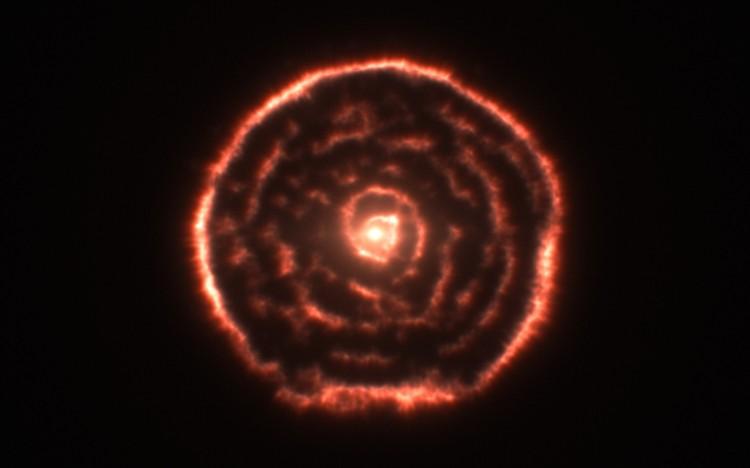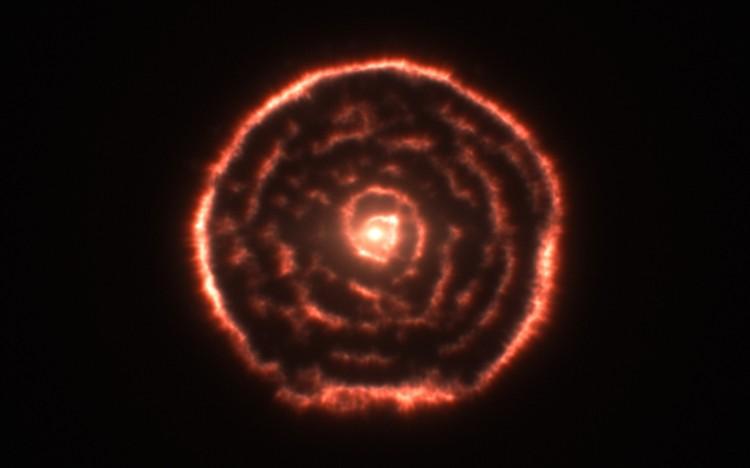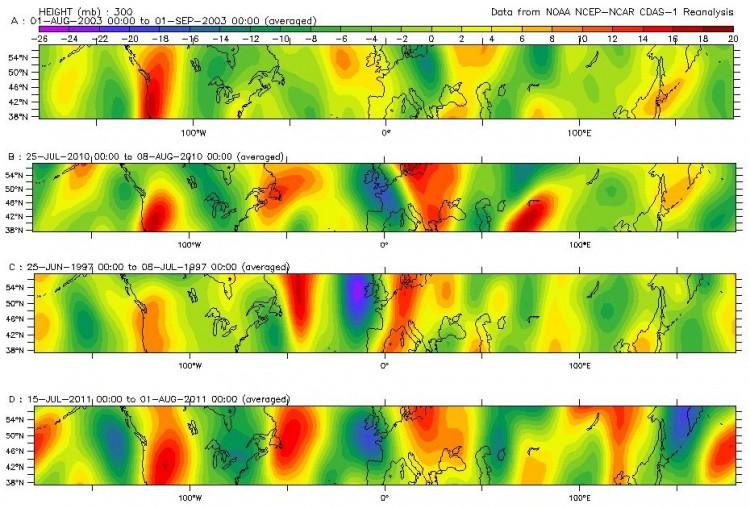The Atacama Large Millimeter/submillimeter Array (ALMA) has revealed a unique phenomenon in the material surrounding the old star R Sculptoris.
Red giants are aging stars with masses up to eight times our sun’s. Although shells have been seen around some before, this is the first observation of such a structure, probably created by a hidden companion star circling the red giant.
These stars lose much of their mass via a stellar wind, releasing a lot of matter for the formation of future stars and solar systems.
Roughly every 10,000 to 50,000 years, helium in a shell around a red giant’s core burns off, generating a thermal pulse that rapidly ejects matter from the star’s surface for a few hundred years, creating a large shell of dust and gas.
“By taking advantage of the power of ALMA to see fine details, we can understand much better what happens to the star before, during and after the thermal pulse, by studying how the shell and the spiral structure are shaped,” said study lead author Matthias Maercker at the University of Bonn, Germany, in a press release.
R Sculptoris apparently underwent a 200-year thermal pulse around 1,800 years ago with its companion star molding the red giant’s wind into a spiral structure.
“In the near future, observations of stars like R Sculptoris with ALMA will help us to understand how the elements we are made up of reached places like the Earth,” Maercker said.
“They also give us a hint of what our own star’s far future might be like.”
The findings will be published in Nature on Oct. 11.
The Epoch Times publishes in 35 countries and in 19 languages. Subscribe to our e-newsletter.





